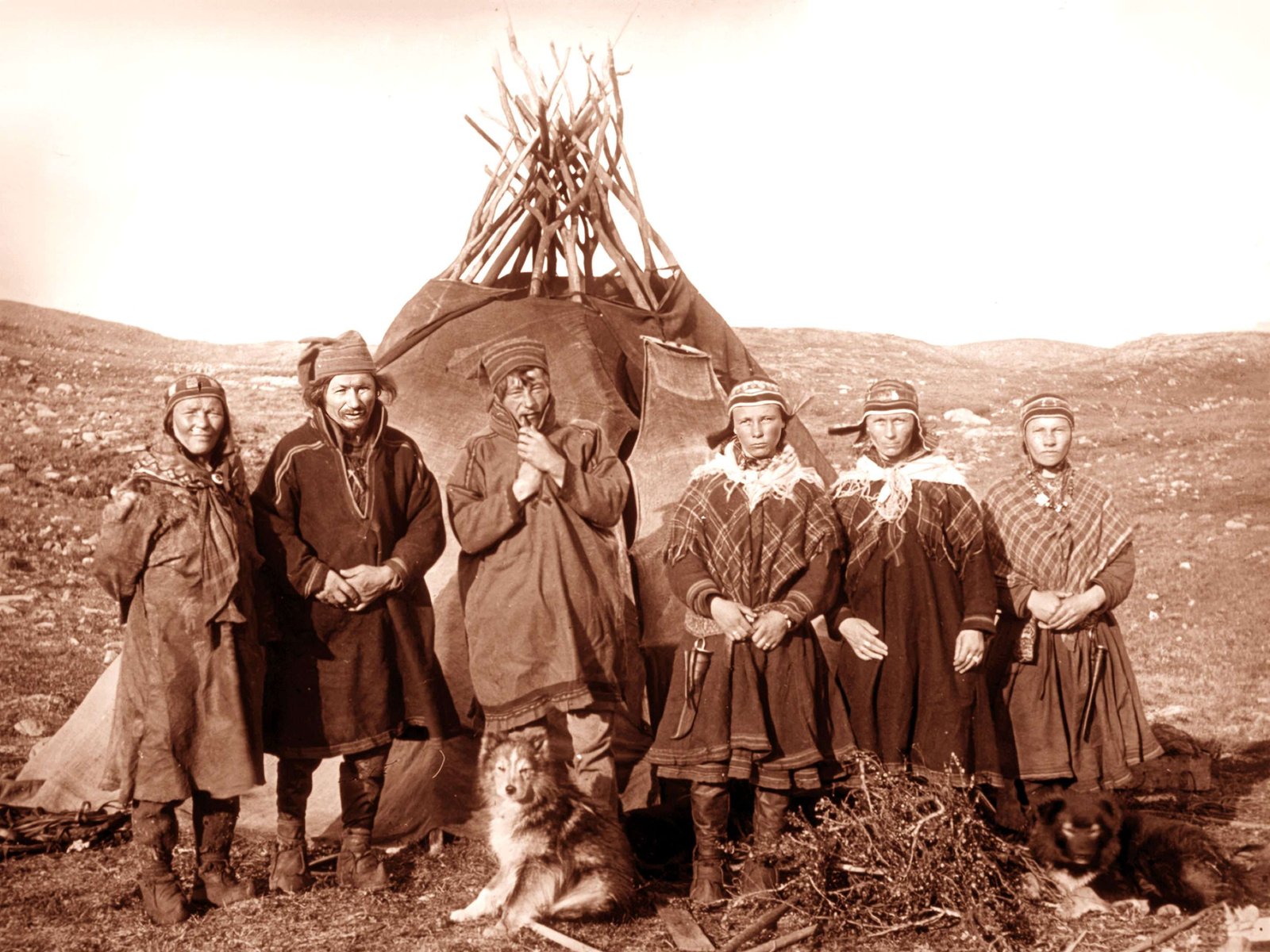In recent years, the Norwegian authorities have made an active attempt to right some of the many past wrongs done to the Sami peoples. Like so many minorities around the world, the Sami suffered ridicule and forced assimilation.
The Sami peoples
The Sami is the common name used for a set of ancient hunter-gatherer-groups living in the historical and borderless territory of Sapmi.
Sapmi stretches across sections of today’s Norway, Sweden, Finland, and Russia.
Historically, there have been at least 10 different Sami sub-languages and sub-cultures.
Today, the Sami are particularly associated with the reindeer and reindeer hunting – and in more recent centuries also reindeer herding. But this is too narrow a description of Sami history and culture.
Today’s overall Sami population is estimated at between 80,000 and 115,000:
- 50,000 to 65,000 in Norway,
- 20,000 to 40,000 in Sweden,
- 8,000 in Finland, and
- 2,000 in Russia.
In Norway, around 3,000 people are currently actively working with the herding of semi-domesticated reindeer.
The traditional Sami way of life continued well into our own time, and is a fascinating gateway into the ancient ways of the hunter-gatherers.
The Norwegian constitution
In 1988, the Norwegian national parliament added a new clause to the Norwegian constitution – with a specific mention of Sami rights:
«The authorities of the state shall create conditions enabling the Sami people to preserve and develop its language, culture and way of life».
The Norwegian Sami Assembly was established in 1989.
Today, the Sami sub-cultures and identities are again on the rise – but for many, the wounds of the past are difficult to heal.
A long overdue apology
In 1997, King Harald V of Norway stood before the Norwegian Sami Assembly to publicly apologise for the appalling behaviour of the Norwegian majority – particularly during the previous two centuries.
«The Norwegian state is founded upon the territories of two peoples – the Norwegians and the Sami. Sami history is closely interwoven with Norwegian history.
Today, we must apologise for the injustice previously inflicted upon the Sami people by the Norwegian authorities – through a hard assimilation policy.
The Norwegian State, therefore, has a particular responsibility for facilitating the Sami people’s ability to build a strong and viable society. This is a historical right based on the Sami’s presence in their cultural regions, which stretches far back in time».
Source: nrk.no | stortinget.no | Store Norske Leksikon snl.no | EGP.00052










